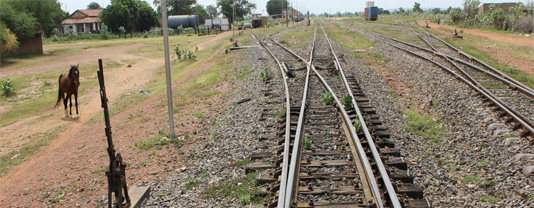The strategic vision of the new government.
Among the objectives, the development of the Senegal River basin and the exploitation of the country’s mineral wealth.
Rail transport in Senegal over the past twenty years has taken a progressive and dramatic downturn. The lack of public and private investment in the existing network, due to the concentration of all available resources on road transport, has had a dual effect.
On the one hand, it has made road traffic even more chaotic (if such a thing was possible!), and on the other it has deprived the country of a fundamental infrastructure at the very moment in which the decision was taken to focus efforts on the exploitation of the country’s immense mineral resources, for the transportation of which an averagely functional (at the very least) rail network is indispensable. Today, traffic is limited to a few freight trains running on the line from Dakar to Mali, and a fairly small, metropolitan-type passenger service between the centre of Dakar and the suburbs. All other services have been suspended.
The new Government, which took office last Spring, has placed the railway, its recovery and relaunch at the top of the agenda, as major priorities. And action has already been taken: at the beginning of October, a meeting at top government levels between Senegal and Mali was held in Dakar in order to decide upon the future of the international line, which is of fundamental importance also for the economy of Mali itself. Parallel with this event, the Senegalese Government drew up a recovery plan which, in the course of a few years, should lead to a resumption of rail traffic, including passenger services on the existing lines, after appropriate upgrading and construction of new sections in various parts of the country.
The new Infrastructure and Transport Minister of the Senegalese Government, his Excellency Mr Mor Ngom, has kindly taken the time to answer our questions, illustrating in a clear and precise manner the current situation and the projects that are presently underway.
Full article is available only for registered users.
Click the link below to download pdf version of Railway Engineering
